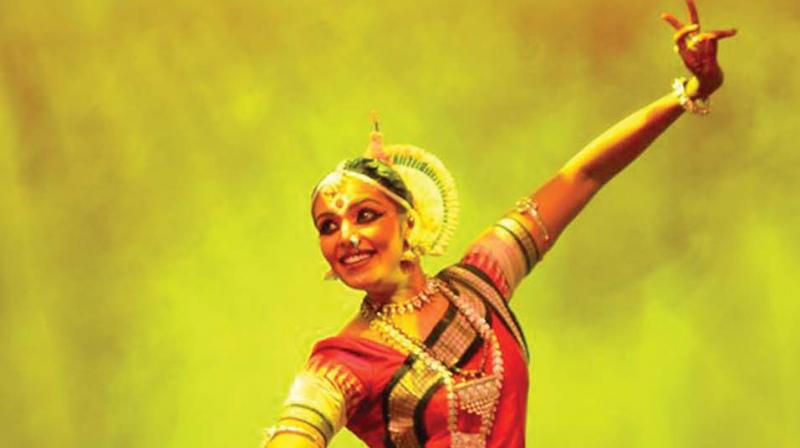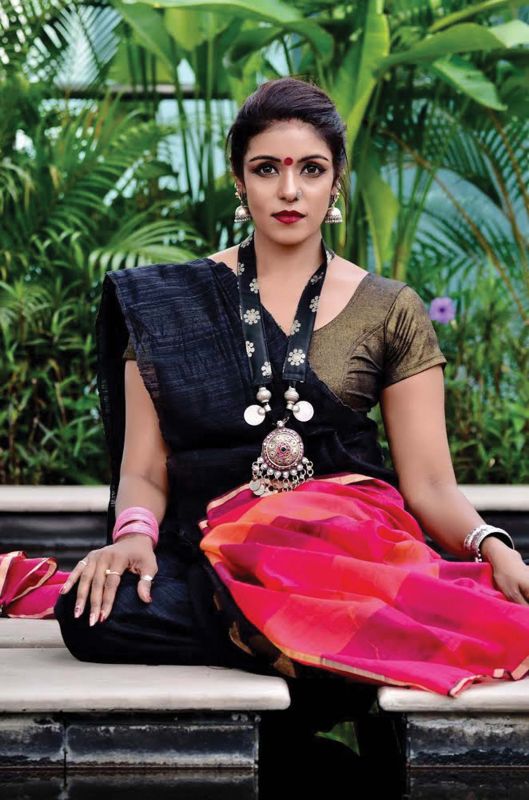Sandhya Manoj prays via Odissi

Odissi is the expression of ultimate and fulfilling devotion as well as an act which brings Indian philosophy to life. Kuala Lumpur-based Malayali dancer Sandhya Manoj, who has been in the field for more than 25 years, is on a lifelong mission to bring forth that philosophy through her Odissi performances. Sandhya started dancing at the age of five under the tutelage of Shree Parvathy Narayana Swamy from Kalamandalam. The training was focused on Bharatanatyam and Mohiniyattam. But she completely dedicated herself to pursuing Odissi as her principal dance practice since moving to Kuala Lumpur, Malaysia, after marriage. In 2006, she travelled with a group of senior practitioners to Odisha to learn Odissi directly from Guru Durga Charan Ranbir.
Sandhya says about her love for dancing, “Dancing has been a passion for me since childhood. It helps me connect to the energy of the moment, and it makes me feel complete.” Sandhya’s idea of performance is based on how she communicates with the audience. “More than just staring at the dancer, the audience has to understand what I am doing, she says.”
Odissi is roughly 2000 years old. The dance has heavy influences of Hinduism, Buddhism, and Jainism. For the audience, Sandhya would have some time to explain the context and the philosophical importance of that story in today’s times. “I played a duet on Ardhanarishwara and during that performance, I was trying to convey the philosophy of Ardhanarishwara than telling the story of the composite androgynous form of Shiva and Parvati. There is nothing new or useful for the audience from just hearing the legend of Ardhanarishwara. It represents the synthesis of masculine and feminine energies of the universe and keeping that synthesis in a well-balanced way, a human being can live harmoniously. I believe that is how it should be, not just this art, but any art,” she adds.

“Odissi is not a mere dance form to entertain people, but one that inspires and elevates. I don’t actually dance, but pray in compassion and the spectators should get that idea. If not, then you are performing just for the sake of performance.” Sandhya says for every performance, there would be audiences having different levels of knowledge about each art. There are an advanced audience and an intermediate audience. And in each performance, there is a mix of these two sets. “When I go with my performances the way I used to do, that is making the narration a bit easier for the audience, sometimes subjected to criticism. Because I am making it look simple, but what I am intending is to make every audience understand. So most of the time, I perform for those who have less knowledge about the art.”
She believes that also helps the art form to grow more. Another aspect about her performance is how she uses her knowledge in yoga in her dance performances. “Yoga never helps me technically, but it really helped me become a better person and understand myself. My husband Manoj is a yoga teacher and we work together at our institution Manasa Yoga, where we teach both Odissi and yoga. Yoga is a way of life and the philosophy of yoga and other performing arts could work well together and that really helped me during my performances.”
She also thinks that though the acceptance level of temple arts has increased among the youth, they should focus on one dance form rather than trying their hand at everything. “Nowadays, everybody is ready to learn Bharatanatyam, Mohiniyattam, Kuchipudi, and Odissi. But in my opinion, they should find their real realm and stick on to it,” she signs off.

